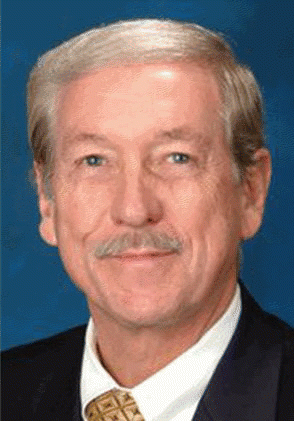Roger L. Crumley, MD, MBA, Professor and former Chair of the Department of Otolaryngology-Head and Neck Surgery at the University of California, Irvine School of Medicine, and current President of the American Laryngological Association, has no doubts about the advantages of laryngeal reinnervation over other treatments for unilateral vocal cord paralysis. After 30 years of performing the procedure and seeing what it has done for his patients, Dr. Crumley gives it the ultimate endorsement: I would certainly have it done. I think it’s a wonderful procedure!
Explore This Issue
January 2009Laryngeal reinnervation has the ability to restore phonation to near-normal after the healing period. So why is it not more widely embraced by otolaryngologists and patients? ENT Today recently talked with Dr. Crumley and other otolaryngologists experienced with laryngeal reinnervation about its advantages and disadvantages-and about its low profile as a useful treatment.
The Crux of the Technique
Patients with unilateral vocal fold paralysis can be treated by a variety of procedures, including injection laryngoplasty, thyroplasty, or reinnervation, explained Joel H. Blumin, MD, Chief of the Division of Laryngology and Professional Voice and Associate Professor of Otolaryngology and Communication Sciences at the Medical College of Wisconsin in Milwaukee. Dr. Blumin has performed the technique numerous times. He recently reported, with colleague Albert L. Merati, MD, Associate Professor and Chief of Laryngology Service in the Department of Otolaryngology-Head and Neck Surgery at the University of Washington School of Medicine in Seattle, on a series of patients who underwent either laryngeal reinnervation with nerve-nerve anastomosis or laryngeal framework surgery. They found that reinnervation was not associated with any additional risks over laryngeal framework surgery.1
 Strap muscle denervation seems to help move the vocal fold medially-an additional dynamic that improves vocal quality.
Strap muscle denervation seems to help move the vocal fold medially-an additional dynamic that improves vocal quality.
-Roger L. Crumley, MD, MBA
To perform the technique, the surgeon exposes the ansa cervicalis nerve, which overlies the great vessels or lies within the carotid sheath. A branch of the nerve is identified, followed, and divided at its insertion into the muscle, then moved into the region of the tracheoesophageal groove.2 There are no known consequences from ‘borrowing’ this nerve, which supplies the strap muscles of the neck, said Dr. Crumley. And, in fact, strap muscle denervation seems to help move the vocal fold medially-an additional dynamic that improves vocal quality.
The surgeon identifies the injured recurrent laryngeal nerve by retracting the superior thyroid neurovascular bundle laterally and inferiorly and dissecting posteriorly and inferiorly up to the point at which the nerve enters the larynx at the inferior horn of the thyroid cartilage. The nerve is divided at a suitable distance that will allow for 7 to 10 mm of unencumbered anastomosis with the ansa cervicalis nerve. Dr. Crumley explained that the surgeon puts three sutures into the two nerve ends, and nerve regeneration takes care of the rest. Following wound closure and recovery from anesthesia, the patient is usually kept overnight.
Leave a Reply